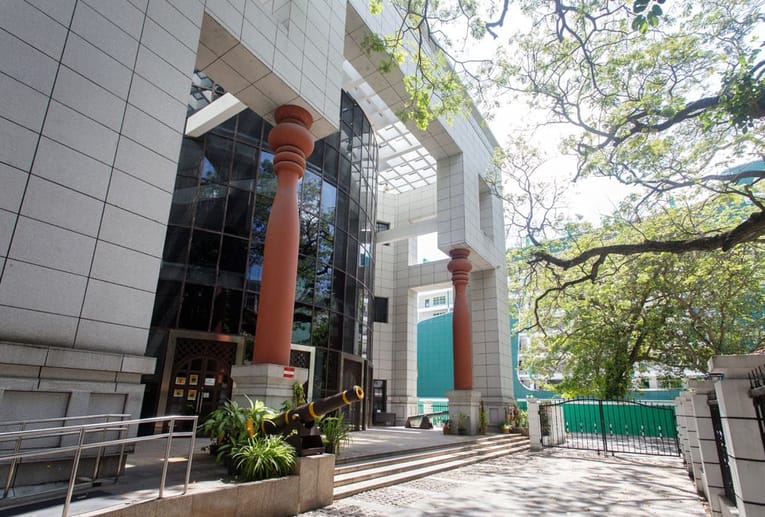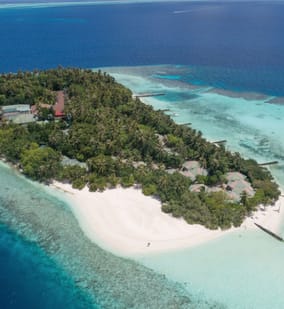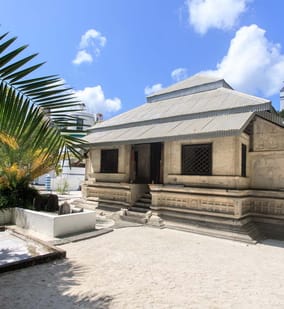Maldives’ intriguing and mysterious ancient Buddhist era

Behind the sun-kissed shores and luxury resorts of the Maldives is a rich cultural history stretching back centuries.
The religious heritage of the island nation is a fascinating part of its story. The Maldives has been an Islamic country for almost 900 years but was actually a Buddhist nation in ancient times.
Going even further back, before embracing Buddhism, Maldivians had practiced an ancient form of Hinduism known as Śrauta. It is not known how or when exactly Buddhism was introduced to the country but it was believed to have arrived in the 3rd Century at the time of Ashoka – an Indian emperor who promoted the spread of Buddhism across ancient Asia.
This period had a profound effect on the Maldives, helping to shape its language, architecture, institutions and customs. Its legacy remains today in architectural remains from Buddhist structures and monasteries. These ancient archaeological remains are found on many islands throughout the Maldives – with many more treasures yet to be discovered.
Thoddoo Buddhist Temple on Thoddoo Island is among the country’s most significant historical and cultural sites. Kuruhinna Tharaagandu, the remains of a Buddhist monastery dating back as far as the 7th Century, is another one of the country’s most important historical sites.
It is believed Buddhism was the dominant religion in the country for more than 1,000 years, spread by the ancient Maldivian kings. It was during this time that Maldivian culture as we know it developed, from the language and architecture to the first known written scripts and ruling systems.
A series of ruling Buddhist dynasties existed until the last king Dhovemi converted to Islam in 1153. Around this time many Arab traders from the Middle East and Africa were sailing the Indian Ocean around Maldives. It’s believed an Arab traveller from Morocco by the name of Abul Barakat Yoosuf Al Barbary arrived in Maldives and convinced the king to convert to Islam.
The new religion was spread across the islands, but faced some resistance from Buddhist strongholds, particularly Nilandhoo Island in Faafu Atoll. This was the last Maldives island to accept Islam.
After Islam was accepted by the nation many of the old Buddhist temples were destroyed. However archaeological discoveries have been made on many atolls across the Maldives, including mounds or stupa containing relics depicting Buddhist iconography.
A wealth of Buddhist relics have been discovered on Nilandhoo. The island’s historical site foah'mathi has a Buddhist temple beneath it believed to be more than 1,000 years old, which was excavated by a Norwegian team of archaeologists led by explorer Thor Heyerdahl in the 1980s. The area has still not been fully explored. The temple was believed to have been built by order of the king Dharumavantha Rasgefaanu around 1,100 years ago.
Many of Heyerdahl’s archaeological discoveries of stone figures and carvings from pre-Islamic civilisations are now on display in the National Museum in Male.
British Civil Servant Harry Bell was one of the first Westerners to show interest in Buddhist culture in the Maldives. Bell made numerous visits to the Maldives during the Victorian era to investigate ancient ruins. He became friends with the then King of Maldives, who supported him in his research.
During his visits Bell studied the ancient mounds found on many of the atolls known locally as havitta or usthubu. These sites remain a popular tourist attraction for visitors today.
In 1990 Maldivian historian Hassan Ahmed Maniku counted as many as 59 islands with Buddhist archaeological sites. The largest monuments of the Buddhist era are in the islands fringing the eastern side of Haddhunmathi Atoll (Laamu Atoll).
Important Buddhist relics include the Loamaafaanu copper plates, written in the old Maldivian alphabet that describe the transition from Buddhism to Islam in the 12th century, and coral stone artefacts.
As Maldives is a coral island nation many of the ancient religious sculptures are made from carved coral.
The Buddhist heritage of the Maldives remains a source of intrigue and mystery and it is believed there are still many Buddhist ruins and artefacts yet to be discovered.








